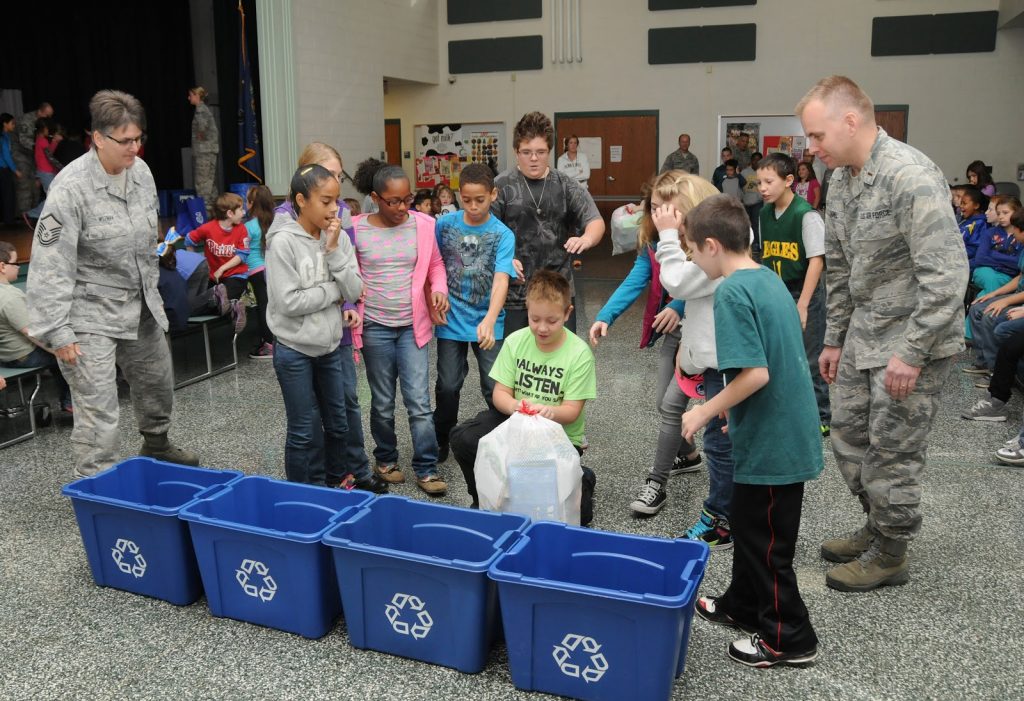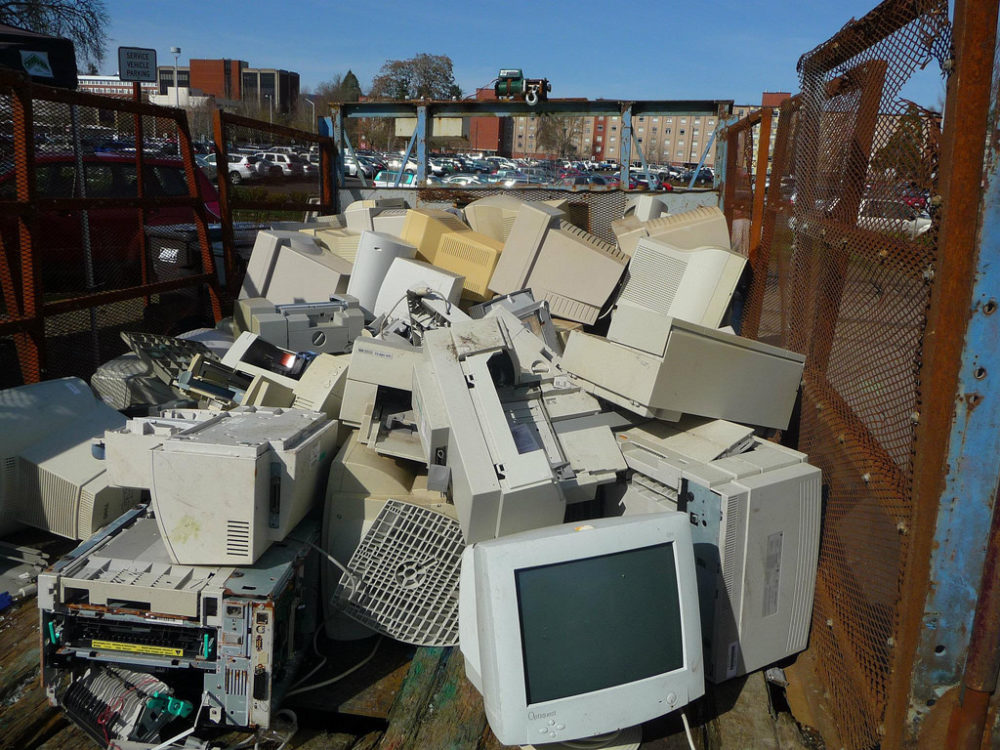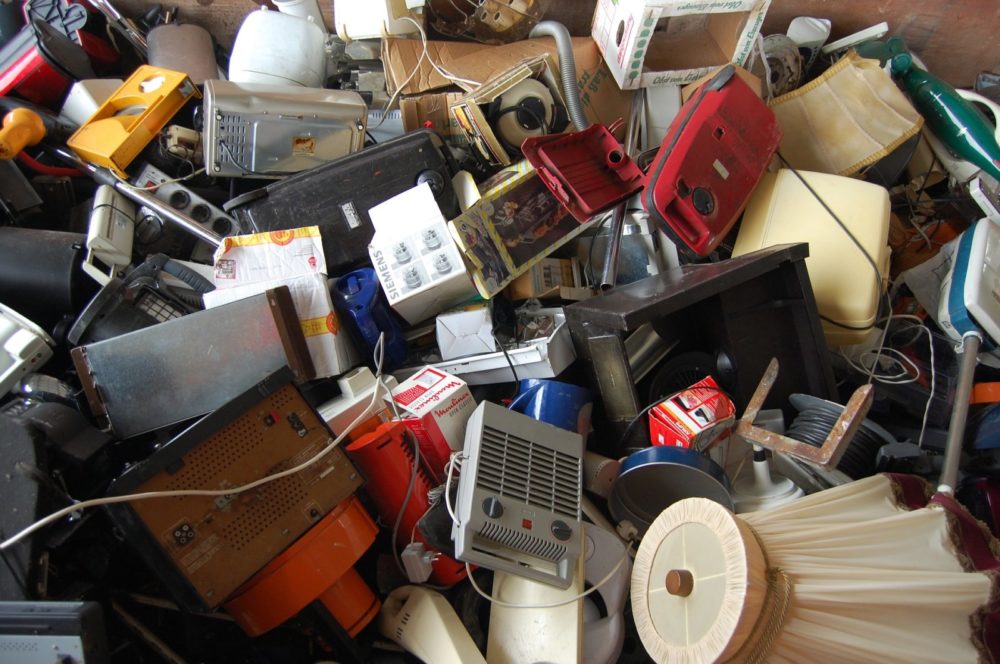The challenges posed by e-waste often come down to two top problems: there’s far too much of it ending up in landfills, and not enough people know that their used electronics can and should get recycled. A great solution is to create some e-waste activities for students to better educate them and get them involved.
There’s been such a strong effort in recent years to educate the public about the risks posed by putting e-waste into landfills, where the toxins within them can contaminate the soil and water, and that recycling those devices enables us to reuse the parts that still have value.
The advocates of e-waste recycling have a secret weapon at their disposal, and a growing number of communities are taking advantage of it. It’s the environmental leaders of the future: students who will one day be responsible for addressing the environmental concerns we have today. Since the future will eventually rest in their hands, educating students about the reasons why we recycle our e-waste, and the enormous environmental benefits of doing that, is a great way to strengthen this movement.
And it’s why a lot of local schools, businesses and communities are doing just that.
What Are e-Waste Activities for Students?

As a growing number of schools have demonstrated, there are a lot of ways to get students more involved in recycling, and in recycling e-waste in particular.
For one thing, in our digital age, most students have a smartphone or laptop, so they need no introduction to what electronics are. In fact, in some classrooms computers and laptops have replaced traditional school books. What the students may not understand are the problems that e-waste creates from an environmental perspective, or how recycling offers the ideal solution.
Fortunately, there are a lot of educational resources available in different states that help students understand why we should recycle old electronics, how e-cycling works and what the concept of “product stewardship” means.
A growing number of school districts now have special programs that teach kids how they can recycle used electronics. Wisconsin, for example, has classroom activities like “What’s In Our Electronics?”, a program that helps students learn about the materials used in making modern electronics and why it’s important to recycle them, and “How Much E-Waste,” where students use multiplication, division and averages to estimate the amount of e-waste in their own communities and to learn about electronics recycling opportunities. Even the classroom programs in this area have gone high tech.
Some teachers work out projects with parents to have students collect old cell phones that can be recycled. And there are huge benefits to teaching the youngest among us about why recycling is important.
Still, regardless of how schools are introducing the subject to students, the basic message is a pretty universal one: keeping used electronics out of our community landfills is an important environmental/economic goal.
Since students tend to own a lot of electronics, they naturally understand the idea that these items can become outdated and need to be replaced. In fact, students may be among the most eager to get rid of their old gadgets and get the newest, most sophisticated upgrades.
And like a lot of adults, most teens probably don’t know how to properly dispose of these unwanted electronics. Chances are, the average teen probably doesn’t think twice about simply throwing away their old device.
They’re not alone. This is a problem they share with millions of consumers around the world, which is why even the United Nations has warned about the skyrocketing amount of e-waste being generated today across the globe. Every year in the U.S. alone, more than 112,000 computers are disposed of on a daily basis, according to a study by the Environmental Protection Agency.
There are a lot of hazardous materials used to make electronics, such as brominated flame retardants, cadmium, mercury and lead, which pose significant risk to our environment through air pollution, soil and water contamination, and dangers to our health and to nearby wildlife.
The reason why so many states are now promoting recycling of e-waste is that it works: it keeps those toxins out of landfills, while an experienced recycling firm like Great Lakes Electronics Corporation can remove the parts that have value — and there are certainly a lot of valued parts in devices that are broken or seem worthless to the owner — and they can be used to make new products, which helps hold down manufacturing costs.
At a time when millions of electronic devices are being thrown away each year, the lessons for students are obvious.
They need to understand and recognize:
- The damage e-waste causes to our environment
- How easy it is to recycle those devices
- How even a device that’s stopped working still has value.
And it’s relatively easy to introduce our students to the concept of how exactly electronic waste can be disposed of properly, and the steps they can take to eliminate these types of environmental problems in the future.
That means introducing students to the concept of recycling centers like Great Lakes Electronics Corporation. Taking your students on a tour of your nearest recycling center and seeing how old electronics get recycled is one way of doing that. That’s a great example of a smart e-waste activity for students.
How Are Schools Approaching This Issue?

The lessons come in various ways. The most recent was RecycleMania, which closed out at the end of March. It was a contest designed to raise student awareness of recycling on campus, and it encouraged students to take part in various events in February and March. More than 100 universities nationwide took part in the activities, which included the Zero Building Challenge, in which all the waste from one whole building got recycled.
This year, Recyclemania also included a button competition. The buttons encourage students to go to as many RecycleMania events as possible to increase their chances of winning a zero-waste kit. One of the buttons was for an E-Waste Drive that aimed to get students to bring in anything electronic, from old cell phones to chargers, computer towers and keyboards. In doing so, RecycleMania created new opportunities to educate students about recycling electronic waste.
And a lot of schools are looking for e-waste activities for students this month in particular with Earth Day coming up on April 22.
Conclusion
Our public schools and teachers have a major role to play and helping to reduce the amount of e-waste that’s being generated, and they can do it by educating our students on how to become environmental leaders. That includes introducing them to e-waste activities for students, while also setting an example and practicing recycling themselves.
School leaders can arrange to bring their used electronics to a recycling firm like Great Lakes Electronics Corporation, which has a strong commitment to environmental protection.
At Great Lakes Electronic Corporation, our specialty is recycling, and we have years of experience performing environmentally friendly recycling of electronic products. We disassemble these items into component parts, and the ones that still have value can be sold for reuse. Other parts are used for metals recovery, and everything is recycled.
Call Great Lakes Electronics Corporation today at 888-392-7831 to learn more or to request a quote.

